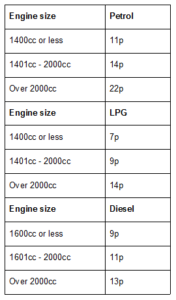The Lifetime Individual Savings Account (ISA) is a longer term tax-free account that receives a government bonus. The accounts will be available from 6 April 2017. HMRC have produced a helpful guide on the account. Some of which is reproduced below:
Opening a Lifetime ISA
You can open a Lifetime ISA if you’re aged 18 or over but under 40.
As with other ISAs, you won’t pay tax on any interest, income or capital gains from cash or investments held within your Lifetime ISA.
Saving in a Lifetime ISA
You can save up to £4,000 each year in a Lifetime ISA. There’s no maximum monthly savings contribution, and you can continue to save in it until you reach 50. The account can stay open after then but you can’t make any more payments into it.
The £4,000 limit, if used, will form part of your overall annual ISA limit. From the tax year 2017 to 2018, the overall annual ISA limit will be £20,000.
Example
You could save:
• £11,000 in a cash ISA
• £2,000 in a stocks and shares ISA
• £3,000 in an innovative finance ISA
• £4,000 in a Lifetime ISA in one tax year.
Your Lifetime ISA won’t close when the tax year finishes. You’ll keep your savings on a tax-free basis for as long as you keep the money in your Lifetime ISA.
Lifetime ISAs can hold cash, stocks and shares qualifying investments, or a combination of both.
Government bonus
When you save into your Lifetime ISA, you’ll receive a government bonus of 25% of the money you put in, up to a maximum of £1,000 a year.
Withdrawals
You can withdraw the funds held in your Lifetime ISA before you’re 60, but you’ll have to pay a withdrawal charge of 25% of the amount you withdraw.
A withdrawal charge will not apply if you’re:
• using it towards a first home
• aged 60
• terminally ill with less than 12 months to live.
If you die, your Lifetime ISA will end on the date of your death and there won’t be a withdrawal charge for withdrawing funds or assets from your account.
Transferring a Lifetime ISA
You can transfer your Lifetime ISA to another Lifetime ISA with a different provider without incurring a withdrawal charge.
If you transfer it to a different type of ISA, you’ll have to pay a withdrawal charge.
Saving for your first home
Your Lifetime ISA savings and the bonus can be used towards buying your first home, worth up to £450,000, without incurring a withdrawal charge. You must be buying your home with a mortgage.
You must use a conveyancer or solicitor to act for you in the purchase, and the funds must be paid direct to them by your Lifetime ISA provider.
If you’re buying with another first time buyer, and you each have a Lifetime ISA, you can both use your government bonus. You can also buy a house with someone who isn’t a first time buyer but they will not be able to use their Lifetime ISA without incurring a withdrawal charge.
Your Lifetime ISA must have been opened for at least 12 months before you can withdraw funds from it to buy your first home.
If you have a Help to Buy ISA, you can transfer those savings into your Lifetime ISA or you can continue to save into both – but you’ll only be able to use the government bonus from one to buy your first home.
You can transfer the balance in your Help to Buy ISA into your Lifetime ISA at any time if the amount is not more than £4,000.
In 2017/18 only, you can transfer the total balance of your Help to Buy ISA, as it stands on 5 April 2017, into your Lifetime ISA without affecting the £4,000 limit.



